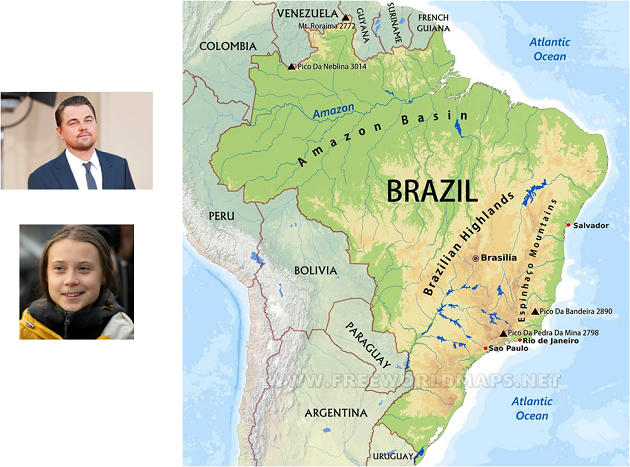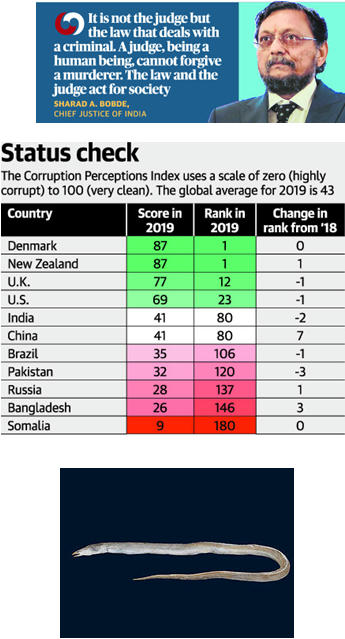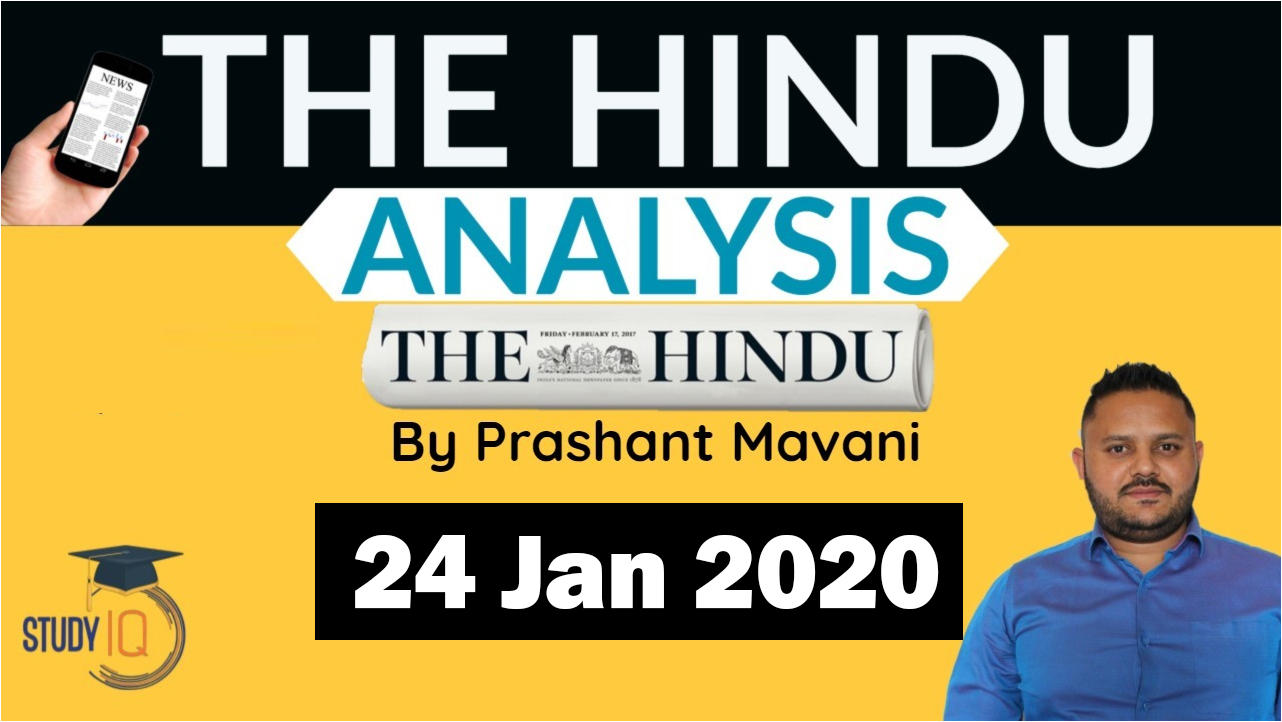Table of Contents
As India prepares to honour Bolsonaro
- Brazilian President Jair Bolsonaro is guest of honour for Republic Day 2020
- Jair’s administration: strong inclination towards the U.S. + damaging policies affecting the Amazon rainforest.
- Brazil has been designated a ‘major non-NATO ally’, a status held by close U.S. allies like Japan, Israel and South Korea.
- Mr. Bolsonaro has also followed Washington by relocating its Israel Embassy in Jerusalem.

- The future of BRICS
- This was set up as a move towards greater multi-polarity; hence the spread across 3 continents and both hemispheres.
- The BRICS combination accounts for about 1/3 of global output.
- Both politically and economically, Brazil and South Africa have been the laggards in recent years.
- The group’s informal structure is an advantage for coordination among the most influential non-Western countries.
BRICS
- China: 2nd
- India : 5th
- Brazil: 9th
- Russia: 11th
- S.Africa: 35th
- BRICS group can survive only if its members maximise their compatibility.
- The main achievement of BRICS is the New Development Bank, with each country contributing equally to its equity.
- so far financed over 40 projects at a cost of $12 billion
- The BRICS countries are also developing a joint payments mechanism to reduce foreign trade settlements in U.S. dollars.
- An offshoot of the group, dealing with climate change, is BASIC (BRICS without Russia)
- Brazil’s agreement to waive visa requirements for Indian citizens.
- Potential for Brazilian investments in the sectors of space and defence, agricultural equipment, animal husbandry, post-harvest technologies, and bio-fuels.
- The total two-way trade is at a paltry $8 billion.
Budgeting for jobs, skilling and economic revival
- Not just the future of the economy, the future of the country’s youth depends on the Budget.
- Even among those employed, a large fraction get low wages and are stuck with ‘employment poverty’.
- Depressing employment scenario: Prolonged and ongoing slowdown
- though several structural factors have also contributed to the situation.
- Q2 GDP growth: 4.5% the lowest in the last six years
- Decline in private consumption and investment are the factors primarily responsible.
- Budget should also focus on reviving demand to promote growth and employment.
- To boost rural demand: PM-KISAN + MGNREGA
- Comprehensive crop insurance scheme
- Integrating farms with mandis
- Irrigation projects
- Rural infrastructure
- Cold storage
- Logistical chains
- Urban areas: construction and related activities are a source of employment for more than 5 crore people.
- Crisis in the real-estate and infrastructure sectors.
- The sector has an unsold inventory of homes, worth several lakh crores.
- Even worse, multiple authorities — the Real Estate Regulatory Authority (RERA); the National Company Law Tribunal (NCLT); and the many consumer courts — have jurisdiction over disputes.
- Restructuring and liquidation of bad projects is very difficult, and in turn, is a main source of the problem of Non-Performing Assets faced by the Non-Banking Financial Companies.
- Budget can raise the limit for availing tax exemption on home loans.
- The ₹25,000-crore fund set up by the centre to bailout 1,600 housing projects should be put to use immediately.
- ₹102-lakh-crore National Infrastructure Pipeline (NIP) programme is a welcome step.
- For private investment, regulatory certainty is as important as the cost of capital.
- Bidding and contracting for new roads, highways, railway tracks and urban development projects is a lengthy process.
- The distress among Small and Medium Enterprises (SMEs) is another area of concern.
- For many products produced by these enterprises, the GST rates are higher for inputs than the final goods.
- ₹20,000 crore gets stuck
- 22 lakh vacancies in various government departments.
- To stop the demographic dividend from becoming a national burden, there is a need to invest heavily in skilling of the youth.
- The Budget should give tax incentives to companies and industrial units to encourage them to provide internships and on-site vocational training opportunities.
- This work experience can be supplemented with teaching of relevant theories.
Needless impatience
- Nirbhaya Case
- Centre’s application in the Supreme Court for additional guidelines.
- MHA: seeks the incorporation of measures aimed at reducing the scope for death row convicts to adopt dilatory tactics.
- Supreme Court’s guidelines in Shatrughan Chauhan (2014): protect constitutional rights of prisoners
- The government wants the Supreme Court to frame a rule imposing a seven-day limit on the time that convicts have to file a mercy petition after a death warrant is issued.
- As the death penalty is limited to the “rarest of rare” cases, nothing is lost if those facing execution are allowed to exhaust all possible remedies.
Unprecedented step
- China has shut down the city of Wuhan
- All modes of transport have been suspended to prevent residents from exiting the city.
- These moves come in the wake of an increasing number of people getting infected and even dying.
- As on January 23, the number of infected people in China stood at 571 and deaths at 17.
- Wuhan, the hotspot of the disease outbreak, has reported nearly 80% of all cases and all the 17 deaths.
- Thailand
- Japan
- South Korea
- Taiwan
- U.S.
- Hong Kong
- Macau
- Vietnam
- Singapore

The origin of the Constitution
- Indian Constitution is believed to have been completed solely by the Constituent Assembly, working flat out in just two years, eleven months and 17 days.
- The Constitution’s long history stretches to over 40 years before its enactment, going all the way back to the Indian Councils Act of 1909.
- This law, for the first time, brought Indians into governance at central and provincial levels, albeit in a very limited way, through a highly restricted and unrepresentative electorate split on communal lines.
- The Government of India Act, 1919 was a vast improvement on the Indian Councils Act but remained unrepresentative.
- It also persisted with communal representation, which had earlier been endorsed by the Congress and the Muslim League through the Lucknow Pact of 1916.
- In its report submitted in 1930, the Simon Commission, constituted to evaluate the Government of India Act of 1919, recommended much greater Indian involvement in the governance of the country.
- What followed its report were three extraordinary roundtable conferences — in 1930, 1931 and 1932 — all held in London to see how best Indians could administer their country.
- Deliberations in these conferences brought out the concerns of different communities, especially the Depressed Classes of which Ambedkar was the de facto leader, and the Muslims led by Muhammad Ali Jinnah. Except the second conference, which Gandhi attended, the other two were boycotted by the Congress.
- These conferences gave voice to other interest groups too — those representing women and Anglo-Indians, for instance — and led to the passage of the Government of India Act of 1935, much of which found its way into the Constitution.
- Roundtable conferences were remarkable for discussing, debating and comprehensively documenting a range of issues — federalism, civil services, regional representation, fundamental rights and universal adult franchise.
- Even the idea of linguistic states and reservation emerged from the discussions at the three roundtable conferences.
- Ambedkar’s brilliant interventions in the Constituent Assembly discussions, for example, were the outcome of the understanding he had developed of many issues discussed in the Simon Commission proceedings and the three roundtable conferences which he attended.
- There was a clear recognition that the subcontinent was becoming increasingly difficult to manage and unless some sort of autonomy was given while leaders like M.K. Gandhi and Jawaharlal Nehru, who believed in peaceful protest, were influential, an armed struggle would follow, possibly under a leader like Subas Chandra Bose.
- We must be proud that the Constituent Assembly were willing to incorporate the best from anywhere – whether they were ideas from our former colonialists or, as in the case of the Directive Principles of State Policy, borrowed from the Irish Constitution.
NEWS
- The condemned can’t fight endlessly, says CJI
- Rajasthan govt. to introduce resolution against CAA
- India slips two places on corruption index
- Rising CO2 levels may double floods, storms
- New snake eel species discovered in Odisha
- This new marine species has been named Ophichthus kailashchandrai to honour the vast contributions of Dr. Kailash Chandra, Director of ZSI, to Indian animal taxonomy. Found: Gopalpur-on-sea in Odisha
- Nepal invites Modi, Imran for Sagarmatha Dialogue
- The three-day event from April 2 will be the biggest diplomatic dialogue in Nepal’s recent history that will be attended by many global figures apart from the leaders of the SAARC countries.
- ICJ orders Myanmar to protect Rohingya

Download Free PDF – Daily Hindu Editorial Analysis






















 WhatsApp
WhatsApp